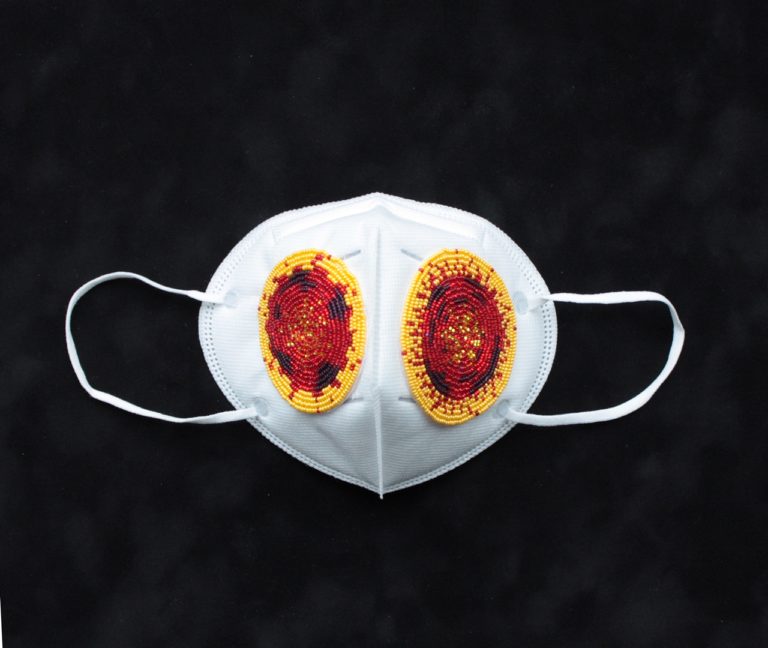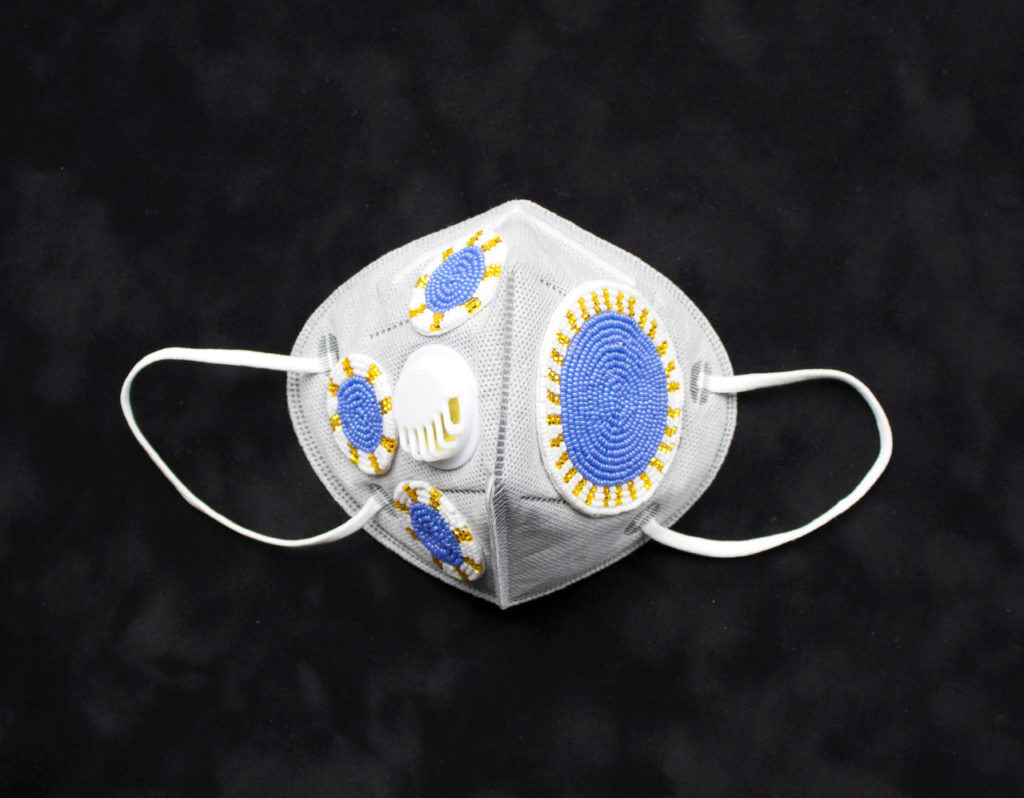
Plains Cree artist Ruth Cuthand adds coronavirus to her collection of beaded diseases
Cuthand (BFA'83, MFA'92) is interested in viruses that affect Indigenous communities, including the current pandemic.
By Jessica Deer | CBC NewsFor artist Ruth Cuthand, beads and viruses go hand-in-hand as both were brought by European traders to the Americas.
It's what her series of work titled Trading looks at, shedding a light on the relationship between colonization, disease, and beads using colourful beaded depictions of microscope images of influenza, bubonic plague, measles, smallpox, typhus, cholera, scarlet fever, diphtheria, chicken pox, yellow fever, and whooping cough.
The Plains Cree artist born in Prince Albert, Sask., has been beading images of disease-causing bacteria and viruses since 2006 and most recently added "Surviving COVID-19" to her collection.

"I did a lot of research on the different viruses, and just became fascinated with it," said Cuthand, who won the prestigious Governor General's Arts Award in February.
"I started looking at viruses that came when Europeans stepped onto the Americas, and ever since then I've been interested in diseases that affect Indigenous communities. So, COVID-19 just fit right in there. Luckily, we haven't had a really serious outbreak in Indigenous communities."
According to Indigenous Services Canada, there have been 225 confirmed positive cases of COVID-19 on First Nations reserves since the pandemic began, with 52 cases in Cuthand's home province of Saskatchewan. As of June 4, there have been five deaths and 22 hospitalizations, with 197 cases considered recovered.
The Yellowhead Institute, a First Nations think-tank based out of Ryerson University's Faculty of Arts, has reported over 450 cases in Indigenous communities based on its own research.
"On the weekend I went out to clean my parent's grave on the reserve, and there were two checkpoints that I had to go through," said Cuthand.
"I really appreciate that there are checkpoints on reserves to stop people from coming in; you have to be there for a specific reason. I think that has probably had a lot to do with numbers."

She planned on beading only one image of SARS CoV-2, the virus that causes COVID-19, when the pandemic started but is currently working on her third and fourth pieces before she takes a break for the summer.
"It's how I make my living so it's been like going to work everyday. I've been busy through the whole pandemic and I'm looking forward to giving my hands a rest," said Cuthand.
"I usually bead four of the same disease, and I also don't bead in the summer. I feel it's better to be outside doing things than sitting inside beading, so as soon as I finish these two I'm done until the fall."
Article originally published on https://www.cbc.ca/news.

